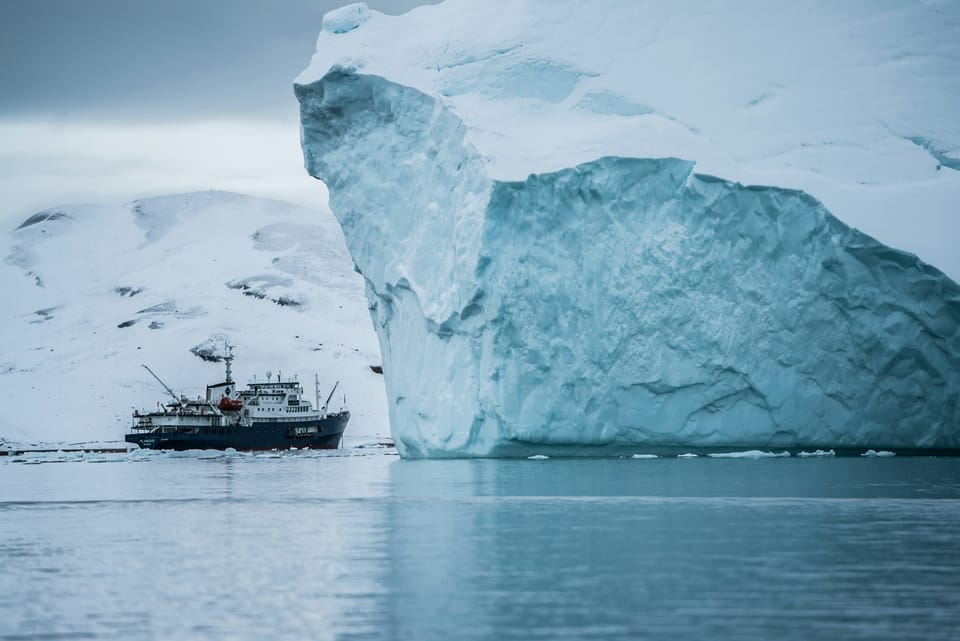Heavy fuel oil ban takes effect in Arctic

Ships sailing through Arctic waters can no longer use or carry heavy bunker fuel under a United Nations regulation that took effect on Monday.
Heavy fuel oil (HFO) is a relatively cheap, tar-like oil that is widely used for shipping around the world. However, its dirty black carbon emissions can darken white ice and accelerate the melting wrought by climate change.
Accounting for 80% of marine fuel used worldwide, HFO is the largest source of ship climate warming and is responsible for around 20% of the shipping industry’s climate impact on a 20-year basis.
HFO, which is produced from the waste left over from oil refining, poses a huge threat to the oceans in general but the Arctic in particular. The sludge-like fuel is almost impossible to clean if a spill occurs, and in colder waters, the fuel does not break down but instead sinks in lumps that linger in sediments, threatening fragile ecosystems, experts say.
Around 75% of marine fuel carried in the Arctic is HFO. And with increasing traffic in the region – recent Arctic Council studies of ship activity have shown a 37% increase of ship activity from 2013 to 2023 and a 111% increase in total distance traveled over the same period of time – environmentalists say regulations are necessary to avoid catastrophic damage.
The fuel was banned from use or transport in the Antarctic in 2011. Environmental groups have been pushing to expand the restriction to northern waters for years and finally persuaded the countries participating in the UN’s International Maritime Organisation (IMO) to enact a ban in 2021.
Exemptions limit ban’s effectiveness
However, many say the ban does not go far enough in geographic scope and will make little impact, as a series of loopholes will allow the vast majority of ships to use the fuel until 2029.
According to the regulations, ships built after 2010 with a “protected fuel tank” will be exempt from the ban. This impact is likely to be significant – the International Council on Clean Transportation estimates that about three-quarters (74%) of ships that use HFO will be able to continue to do so. Ships of countries that border the Arctic will also be exempt from the ban in their own territorial waters, as are ships engaged in securing the safety of ships or those used in search and rescue operations.
The ban only covers 16% of HFO burned and 30% of HFO carried as fuel, excluding HFO cargoes entirely, a study by the International Council on Clean Transportation (ICCT) found.
“Governments and NGOs fought long and hard to achieve the ban on the use and carriage of HFO in the Arctic – yet see that it will be half-implemented is quite simply not good enough," said Dr. Sian Prior, Lead Advisor to the Clean Arctic Alliance, in a statement. “IMO Member States, especially Arctic coastal countries, must go farther than the IMO ban by implementing it in ways that truly protect the Arctic from HFO spills and black carbon emissions – and that means refusing to offer loopholes to the shipping industry”.
Russia, a major player in the region with over 800 ships operating in northern waters, is not implementing the new regulation.
However, another north sea neighbor, Norway, has become the gold standard for what can be achieved. The Norwegian government has already implemented a strong ban on HFO around the Svalbard archipelago, and those who disobey face sizeable fines.
Spill cost greatly outweighs that of alternative fuel, experts say
Prices of alternatives to HFO have become more affordable over the past decade and experts say the cost to switch fuel is insignificant compared to the cost of a spill. Switching Arctic ships from HFO to distillate fuel would cost the Arctic fleet roughly US$5.2 million in 2025, an increase in fleetwide fuel costs of less than 2%, the ICCT study found.
There have been catastrophic HFO spills in recent decades. In 2002, the tanker Prestige was carrying 77,000 tons of HFO as cargo when it suffered hull damage off the coast of northern Spain, stranding oil along the coastlines of Portugal, Spain, and France. It caused the death of more than 250,000 sea creatures and birds and cost over 3 billion euros to clean up. Another off the coast of Alaska covered 86 miles of shoreline along the Unalaska island coast in oil, transporting the damaging fuel to inter- and sub-tidal sediment habitats. Cleaning continued for two years and similarly contributed to the death of more than 200,000 creatures.







Member discussion